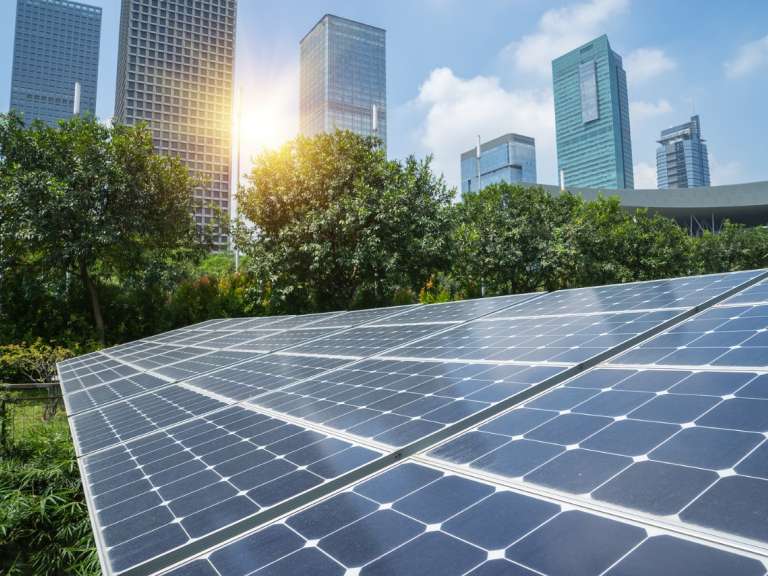Futuristic Cities Look to Create a Lasting Energy Architecture
Ken SilversteinAn architect shares insights into how cities are tasked with recreating their energy architecture to deal with natural disasters.

Just how is climate change threatening cities, and what steps can jurisdictions take to create a durable energy architecture? In an interview with Transform, Richard Mullane, a principal and the practice leader for architecture and urban planning firm Hassell, discusses how futuristic cities will build such an energy architecture and how they will deal with natural disasters. His comments, edited for style and space, follow.
Richard Mullane: There are opportunities to design barriers not just so that they can repel storm surges and tides but also to circulate that energy—an energy architecture that is not yet commercially available. We see a huge potential to create barriers that take energy out of the symptoms of sea level rise.
The thing about tidal energy is that you need to get some serious tidal changes to extract energy. And that means changes in that technology are necessary. In other words, tidal shifts are further off the coast, and they're not close to populations. So we need to be able to capture energy from smaller amounts of slower currents. Most barriers are now static walls such as levies, wet lands, and marsh lands. They are used to absorb energy.
Mullane: Disasters have occurred throughout that area: droughts, storms, floods, and wildfires. It is also interesting to look at the frequency of seismic events, earthquakes. We found there have been 26 significant seismic events over the last century, roughly. The current approach is to identify the land that is at the greatest risk, meaning we can't build on fault lines or shore lines.
There is not yet any technology to capture energy created during any of those events, but we would hope that this evolves over time. But there is certainly a trend toward decentralized energy systems or precinct-based energy systems to reduce the vulnerability of energy systems. The more centralized the energy systems are, the more vulnerable they are. If we can create multiple sources of energy and use localized microgrids, then that will make entire systems resilient. This is what New York has been trying to do since Superstorm Sandy, and it is what the Bay Area will also try to do.
Mullane: The most resilient systems have fewer points of vulnerability. The same principles apply for disaster response and evacuations. Schools and libraries should be utilized for disaster response, and we should not rely on the centralized distribution of information.
Mullane: Public transport is still the most efficient system. There is an opportunity to keep that and add more and more corridors. It is the easiest way to expand infrastructure. But the risk is that you end up with a vulnerable system. If one corridor is so valuable that, if it is effected by a hurricane or flood, a number of others systems could go down, [then that's a substantial risk.]
Autonomous vehicles could possibly decentralize transport. They can find the most efficient route: Dropping off people and then returning.
Mullane: New urban development and new urban infrastructure is faster and more cost effective than the renewal of existing neighborhoods. Trying to put energy infrastructure where people already live is complex. People need to see it built on greenfield land. Also look at industrial land that will become available. People can then see solar panels and wind power. We may need to build new areas from scratch, which will be controversial and will need to be managed in terms of environmental impact. Phase two is a retrofit of existing development, but that would rely on a certain exoskeletal infrastructure aesthetic being accepted and then popularized.
Mullane's comments shed insights on how cities can start to combat a difficult fact: The climate is changing. While there is disagreement about its effect on natural disasters, there is no denying that events such as earthquakes, wildfires, and hurricanes are challenging cities to rethink their energy and transport solutions.
Microgrids can deliver clean, reliable electricity to remote regions of the world that don't have access to centralized generation and transmission.
Digital models of power plants are showing the way to lower emissions. Other benefits include traditional measures of availability, reliability, and performance. Big-data analytics provides more, including flexibility, maintainability, and sustainability.
Staying on top of strict "green" regulations is challenging, but environmental control systems keep utility managers from seeing red.